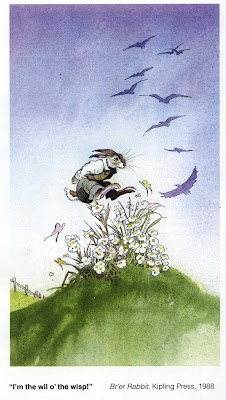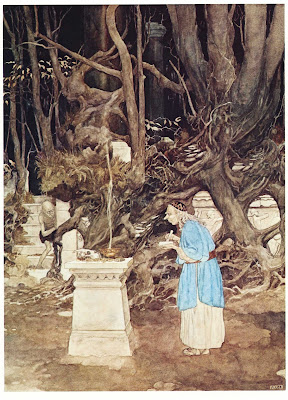Dark Horse Books, February 1994
'Visions' (128 pp) is a sturdy chunk of an art book, measuring 12 " x 12" and printing on quality paper stock.
[It's too big to fit on my scanner bed, so I can only provide excerpts of its pages]
If you were a dedicated Heavy Metal reader during its early years (i.e. 1977 - 1980), then you know that Arthur Suydam (pr. Soo-DAM) was an integral part of the artistic landscape of that magazine. Strips like 'Food for the Children', 'Lulea', and 'Mama's Place' remain as memorable nowadays as they did back then.
During the 80s, Suydam's contributions expanded to Epic Illustrated and its comic book line, where he published his 'Cholly and Flytrap' series. Suydam also contributed to Neal Adam's Continuity Comics.
Starting in the early 90s, Suydam became a standout cover artist for a variety of publishers, among them Dark Horse comics, whose series 'Aliens: Genocide' featured dramatic color paintings by Suydam.
On into the 2000s, Suydam became associated with the covers for the best-selling Marvel Zombies imprint. He is a major draw at comics conventions, although some of his appearances at these functions have elicited controversy from other presenters..........?! Not being an attendee at Comic Cons myself, and thus not entirely understanding the atmosphere at such places, I refrain from interjecting any editorial comments of my own.
'Visions' Suydam's artwork up till 1992. Its four chapters cover Paintings, Children's Books, Drawings, and Comics.
'Paintings' provides color reproductions of Suydam's art for the Dark Horse 'Aliens: Genocide' and 'Aliens 3' series, as well as covers he produced for Continuity Comics and DC.
'Children's Books' deals with color and black and white illustrations Suydam was commissioned to create in 1988 for editions of The Wind in the Willows and Brer Rabbit by Kipling Press. (While the Brer Rabbit book apparently was published, I had difficulty finding a record of The Wind in the Willows book ever being issued).
The chapter on 'Drawings' is the briefest in the book and offers up some pen-and-ink studies of barbarians and nubile women.
The final chapter, 'Comics', is the best in the book, providing full-page and half-page reproductions of selected panels from Suydam's work on 'Mudwogs' and 'Cholly and Flytrap'. The meticulous craftsmanship that defines Suydam's approach to illustration is evident when looking at these enlarged panels.
For example, in the text below, second-to-last sentence, Henkel uses the word 'bricoleur'; according to the Merriam-Webster dictionary, this word is:
one who putters about, from the French bricoler
Another weakness of 'Visions' is that it doesn't provide any information about Suydam's technique. Usually an art overview of this type gives at least some details about how the artist creates his compositions. Whether the absence of such information in 'Visions' is the result of a decision by Suydam to keep his artistic techniques to himself, or a decision by the book's creators to avoid any mention of techniques, is unclear.
[I should mention the other Suydam art book that has been published to date: The Fantastic Art of Arthur Suydam, released by Vanguard in 2005. I haven't read this book, but it gets mixed reviews at amazon.]
Summing up, whether you are a Suydam fan, or someone who appreciates modern American illustration, then 'Visions: The Art of Arthur Suydam' may be worth picking up. The book's large format and high quality reproductions are definite pluses, as well as the fact that used copies in good condition are available for under $20.
[I should mention the other Suydam art book that has been published to date: The Fantastic Art of Arthur Suydam, released by Vanguard in 2005. I haven't read this book, but it gets mixed reviews at amazon.]
Summing up, whether you are a Suydam fan, or someone who appreciates modern American illustration, then 'Visions: The Art of Arthur Suydam' may be worth picking up. The book's large format and high quality reproductions are definite pluses, as well as the fact that used copies in good condition are available for under $20.

















































































